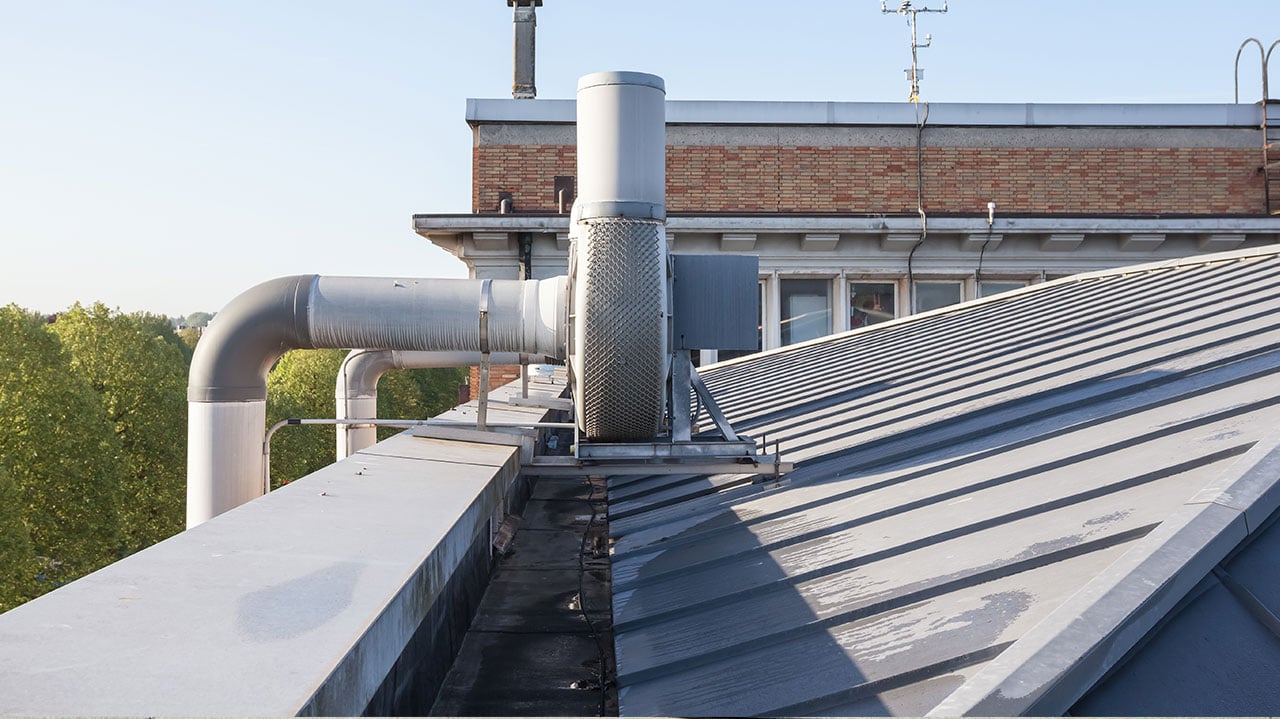Not all roofs are created the same – or even with the same pitch. When we talk about commercial roof slope, we usually talk about a completely flat roof. With that said, not every commercial roof is flat. Sloped commercial roofs are common in several parts of the country, either for decorative or weather-related reasons.
On the one hand, it’s as important to protect a sloped commercial roof as it is to protect a flat commercial roof. On the other hand, the pitch of a sloped commercial roof can make it difficult to design rooftop supports, walkways, and other features designed to improve the safety and longevity of your roof. How do you compensate for roof slope when designing rooftop supports?
Commercial Roofs: Flat vs. Sloped
Why would someone choose a flat commercial roof over a sloped roof in the first place? Although flat residential and commercial roofs are the default in regions such as the West Coast, you still tend to see flat-roofed commercial buildings even areas like the Northeast, where ice, snow, and heavy rain are more common. Therefore, even though you might think that the choice between the two roofing options is mostly due to the weather, there are clearly more factors involved.
One factor is cost. Flat commercial roofs are easier to build, and they cost less. Building in a sloped roof means adding extra material and forming it differently in order to create a pitch. Appearance is another factor, as it’s easier to hide rooftop equipment when it’s on top of a flat roof. Lastly, it’s easier to install rooftop supports – making it easier to conduct maintenance and repairs.
Many commercial roofs are not completely flat but have a low slope – less than three inches per foot – that may appear flat from below. These low-slope roofs are a design compromise between pitched roofs and completely flat roofs. They cost a little more than flat roofs but have better drainage. It’s also somewhat easier to retrofit equipment and rooftop supports to sit on a sloped roof.
Lastly, there are high-pitch commercial roofs to worry about. These are rarer than either flat roofs or low-slope roofs, but they’re still worth mentioning. These roofs have excellent resistance to the elements, but they are much more expensive to build, as well as being much more difficult to maintain.
Design for Your Roof Slope with PHP Systems/Design
Sometimes, building a sloped commercial roof is a decision that you inherit when you occupy your building. Other times, it’s a decision that’s forced upon you by the necessities of your environment. Either way, it’s going to be something that you need to compensate for.
Effectively, you’re going to need to find supports that can be adjusted to match the angle of your sloped roof. With that being said, this configuration will put uneven strain on your supports, so you need to make sure that you’re investing in a support that can actually withstand years of differential forces.
For larger pieces of equipment – or roofs with an unusual pitch – you may need to commission custom supports. This means working with a reliable fabricator and an experienced roofing contractor. Any custom support should be able to stand the test of time as well as, if not better than, mass manufactured models. In the meantime, you’ll need a roofing contractor to make sure that your fabricator knows what they’re doing and that your installers are doing their jobs correctly.
At PHP Systems/Design, we have decades of combined experience creating rooftop support systems, walkways, crossover, and staircases for any kind of commercial roof. Whether you need off the rack equipment for a flat roof or custom supports for an unusual sloped roof, we can deliver the products you need.
Each of our supports is designed to last beyond the projected lifespan of your roof itself. Made using hot-dip galvanized steel, each support will weather lifetimes without maintenance while supporting pipes, equipment, and people. If you need a custom design, we’ll work with you, your architect, and your chosen roofing contractor to create a system of walkways and supports that will fit you roof exactly – no matter what it looks like.




